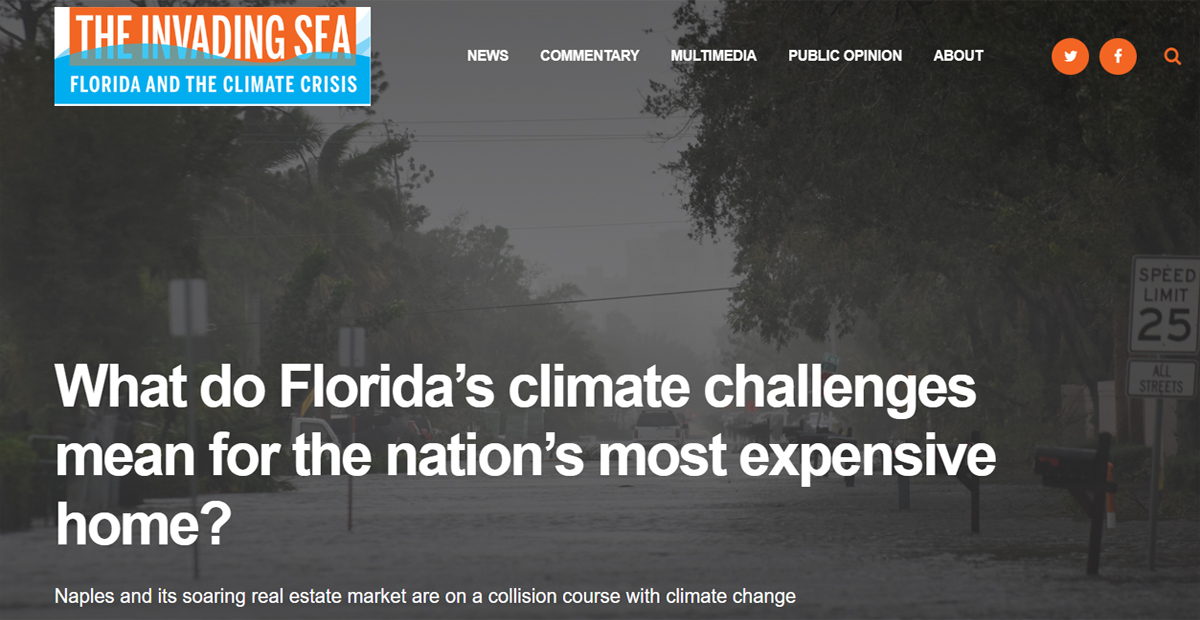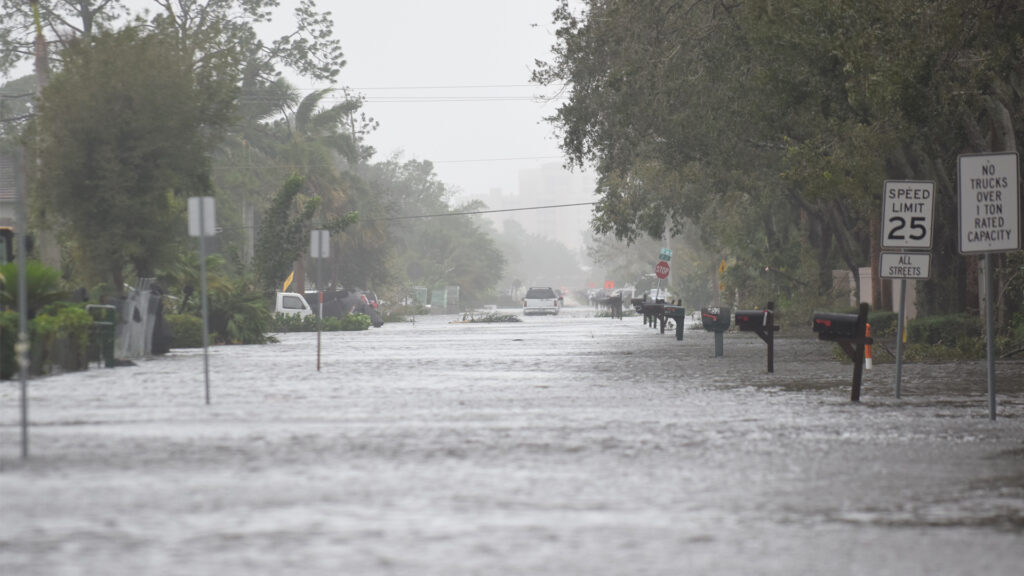
By Kathleen Biggins, C-Change Conversations
April 18, 2024
In the heart of Naples, Florida, sits the most expensive home currently on the market in the United States: 100 Bay Road, priced at an astonishing $295 million, is nestled in the elite Port Royal neighborhood, one of the nation’s wealthiest zip codes.
This house is a testament to Naples’ status as a dynamic, luxury real estate market, recognized as recently as 2022 by Travel and Leisure as one of the best cities to live in.
The allure of Naples is undeniable, but the realities of a longer-term horizon are coming into focus. Can this community maintain its charm and high property values in a climate-changed world?
Naples experienced a wake-up call in 2022 with Hurricane Ian. Scientists have confirmed Hurricane Ian’s destructive power was exacerbated by climate change, leading to heavier rains, more powerful winds and a higher storm surge.

Ian caused over $100 billion in damages in Florida alone. Despite the Naples area bouncing back relatively quickly, its residents shouldn’t get complacent. As the planet continues to heat up, storms, flooding and heat waves are expected to intensify and become more frequent.
The 100 Bay property epitomizes the complexities facing buyers in today’s emerging climate-aware market. Prospective owners of luxury properties aren’t just evaluating aesthetics or amenities; they’re also increasingly weighing climate change’s projected impacts on the longevity and financial stability of their investment.
New tools such as Risk Factor are allowing prospective home buyers, as well as insurance and mortgage companies, to foresee and plan for the magnitude of the risks ahead. In evaluating the potential future for 100 Bay Road, Risk Factor’s models project that the property has a 34% chance of experiencing a 1-foot flood in the next 15 years and a 46% chance of enduring wind gusts over 130 mph.
Unlike less-affluent homeowners, the potential buyers of 100 Bay Road will certainly be able to build protections against the encroaching sea and powerful storm winds. But even the wealthiest can’t defend against some of the more insidious impacts of climate change: infrastructure damage to roads, airports and communications; challenges to health and emergency services systems; a rise in mosquito-borne diseases; hotter winter days and more scorching summer ones.
Other community-wide risks are expected as well. The Florida Gulf Coast has some of the highest rates of sea-level rise in the world, according to the National Oceanic and Atmospheric Administration, with an increase of about 1.5 feet projected by mid-century.
According to Climate Central’s Coastal Risk Screening tool, even without storm surges, significant numbers of properties in Naples will be flooded every year by 2050, with many flooding as early as 2030. This poses significant fiscal risks to the town and county, including the cost of cleaning up inundated land, building new infrastructure to prepare for flooding and the potential loss of property taxes on these prime residences.
As Climate Central’s sea-level rise team project manager, Kelly Van Buren, explains, “One of the challenges of sea-level rise is that it takes decades for us to see the consequences of our choices – most of the sea level rise we expect to see by 2050 is the result of heat-trapping pollution we have already put into the atmosphere. The silver lining is that we have a very good idea of the risks we will face in the future and that gives us time to prepare.”
While we can forecast climate change risks on a property-by-property basis, many damages happen on a community scale. Even if one’s personal property is unscathed, climate change can diminish the town’s allure, while also significantly increasing the costs to live there.
Naples and its soaring real estate market are on a collision course with climate change. With these climate-risk tools, sophisticated home buyers and real estate investors can more clearly understand what is at risk and how quickly – within the terms of a new 30-year mortgage – these threats could materialize.
In 2024, we can now scientifically attribute whether damaging weather events were made more likely or more damaging due to climate change. We also can project what is likely to happen if we stay on our current emissions course. The risks of climate damages will increasingly be factored into our financial and legal systems, and ultimately into real estate markets.
The stunning property at 100 Bay Road should be enjoyed for generations to come, but its future is jeopardized by climate change. And these threats are shared with other properties and communities along our coastlines. As we finally understand the magnitude of what is at risk, it should spur more action to preserve our investments, treasured homes and iconic communities.


